If you’re stuck with a dead battery and need to know how to jump start a BMW, don’t worry—it’s simpler than it seems! Batteries cause about 44% of vehicle breakdowns, so you’re not alone. With the right approach, you can revive your car and be back on the road in no time. Not sure how much power you need? Learn how many amps are needed to jump-start a car to ensure you have the right tool.
BMWs, known for their advanced electronics, often have batteries tucked away in the trunk or under seats. This setup might feel intimidating, but following the right steps ensures the process takes just 10-15 minutes without damaging your vehicle’s system.
Quick Look
To jump-start a BMW, first connect the red jumper cable to the positive terminal of both the BMW and the donor vehicle. Then, attach the black cable to the negative terminal on the donor car and ground the other end on a metal surface of the BMW. Start the donor vehicle, let it run for a few minutes, and then try starting the BMW
Can jump-starting a BMW drain the donor vehicle’s battery?
Jump-starting a BMW is unlikely to drain the donor vehicle’s battery, but it can strain the system if the donor vehicle has a weak battery or alternator. Ensuring the donor vehicle’s battery is fully charged and in good condition is essential to prevent potential issues.
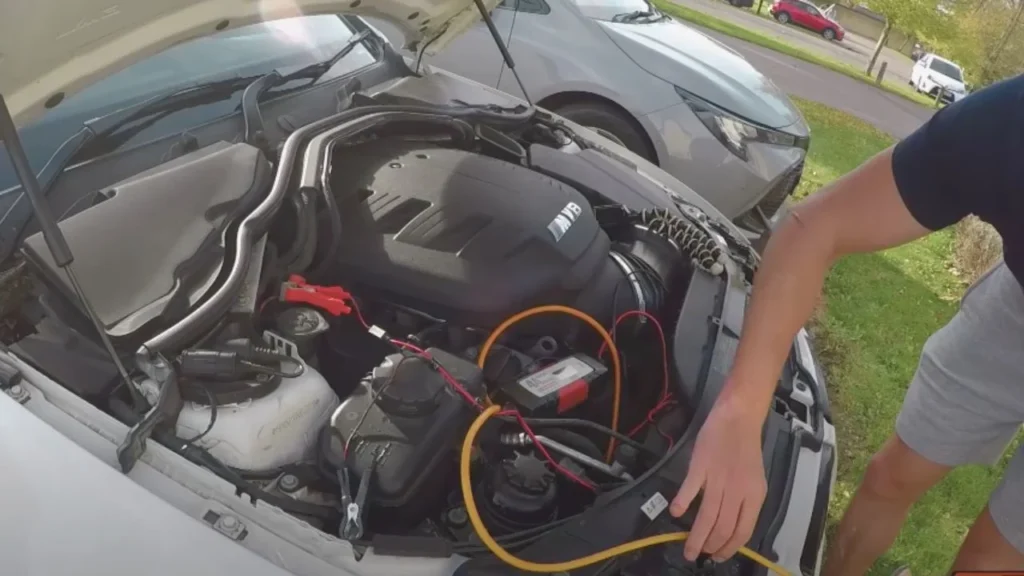
If the donor car’s alternator is struggling or the battery is old, it may have difficulty powering both cars. It’s a good practice to let the donor car idle for several minutes after connecting the cables to minimize strain and ensure enough power for the jump-start
Wondering if your hybrid can help others? Find out whether a hybrid can jump-start a normal car and what to consider before trying.
Tools Required
Before getting started, having the right tools makes the process smoother and safer. BMWs may have unique battery setups, so it’s helpful to double-check for the correct terminal locations in advance. Here’s a quick list of what I needed for a successful jump-start.
- Jumper cables (at least 10 feet long for flexibility).
- A second vehicle with a charged battery or a portable jump starter with at least 1,200 amps.
- Gloves and safety glasses for protection.
- User manual (to locate terminals or jump points if unclear).
Step-by-Step Procedure
Let’s dive right into it! Jump-starting a BMW isn’t complicated, but you need to follow a specific order to avoid issues with the car’s battery or electronics. Whether you’re using a friend’s car or a portable jump starter, these quick steps will have you on the road in no time. Just remember: safety first, and always keep the cables untangled to avoid sparks!
Step 1: Locate the Battery Terminals
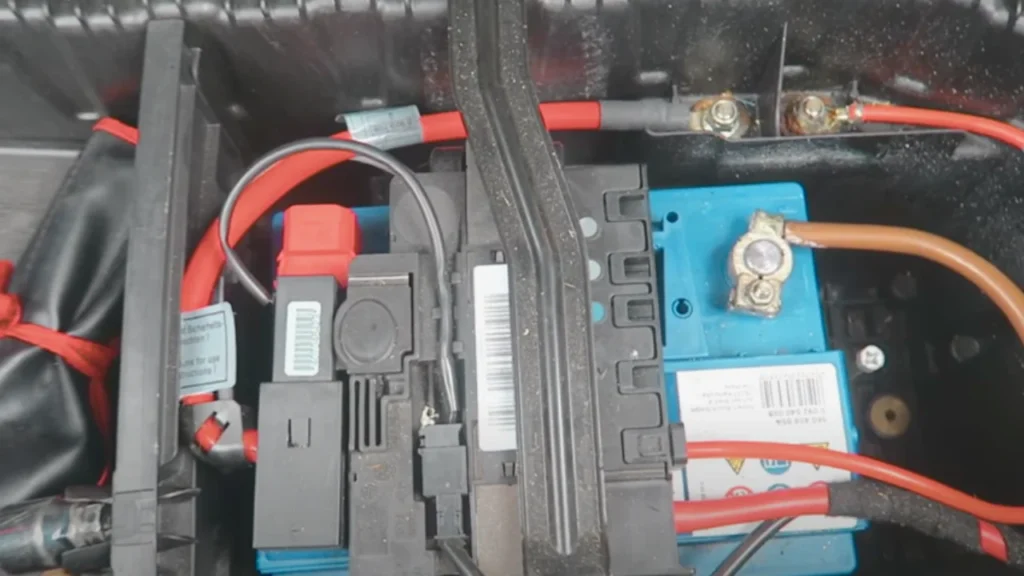
Check under the hood for the + and – terminals or use the jump points if your BMW has a trunk battery. Verify their positions to avoid connecting the wrong clamps. It’s critical for safety since BMW’s electronics can be sensitive.
Step 2: Connect the Jumper Cables
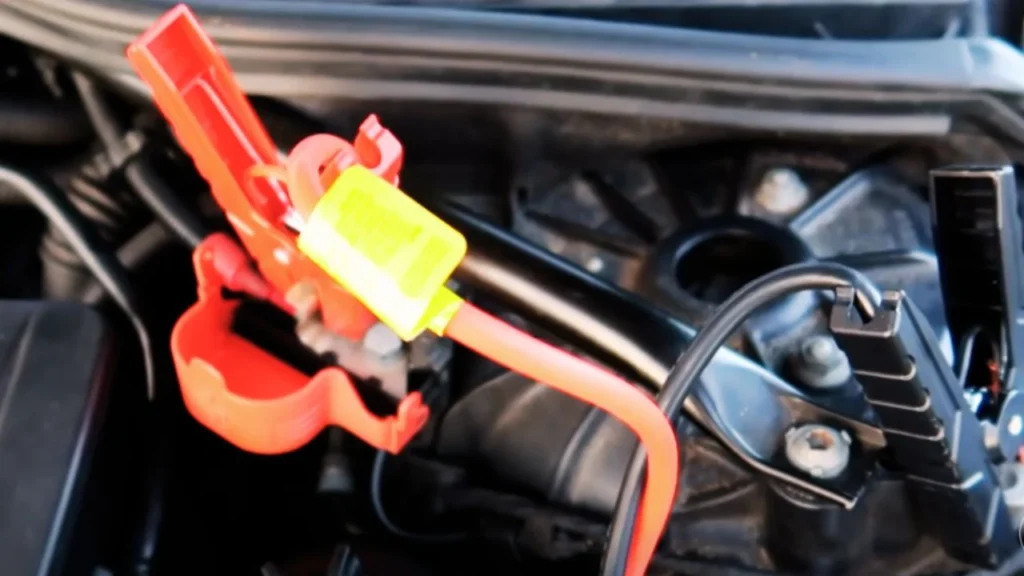
Start with the red clamp on your BMW’s positive terminal, then connect the other red clamp to the donor car’s positive terminal. Now, attach a black clamp to the donor’s negative terminal and the other black clamp to your car’s metal frame to ground the circuit.
Step 3: Start the Donor Vehicle
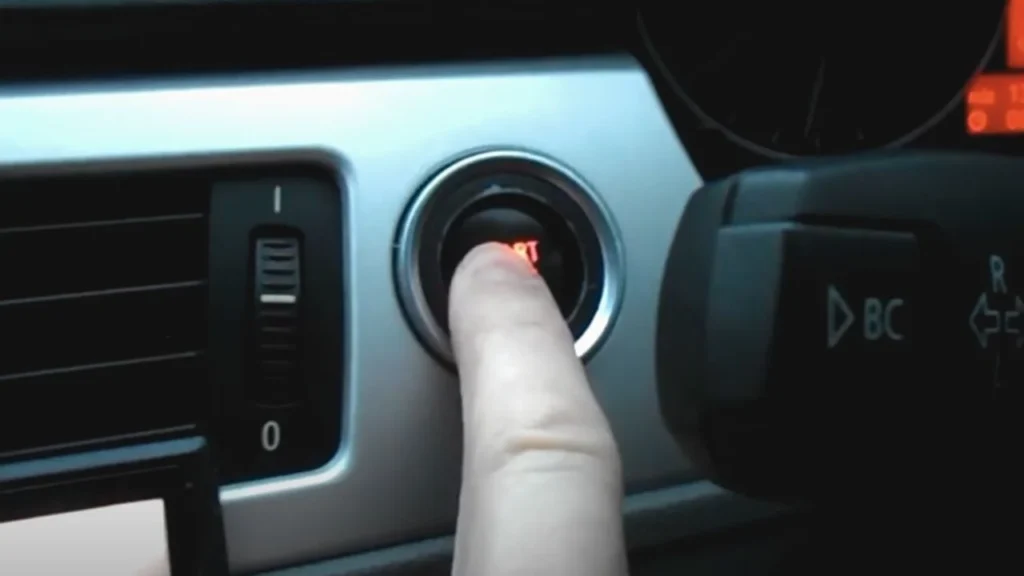
Turn on the donor car and let it idle for about 5-10 minutes. This provides enough power to recharge your battery partially. Use this time to double-check the cable connections—loose clamps can prevent the jump from working.
Step 4: Attempt to Start Your BMW
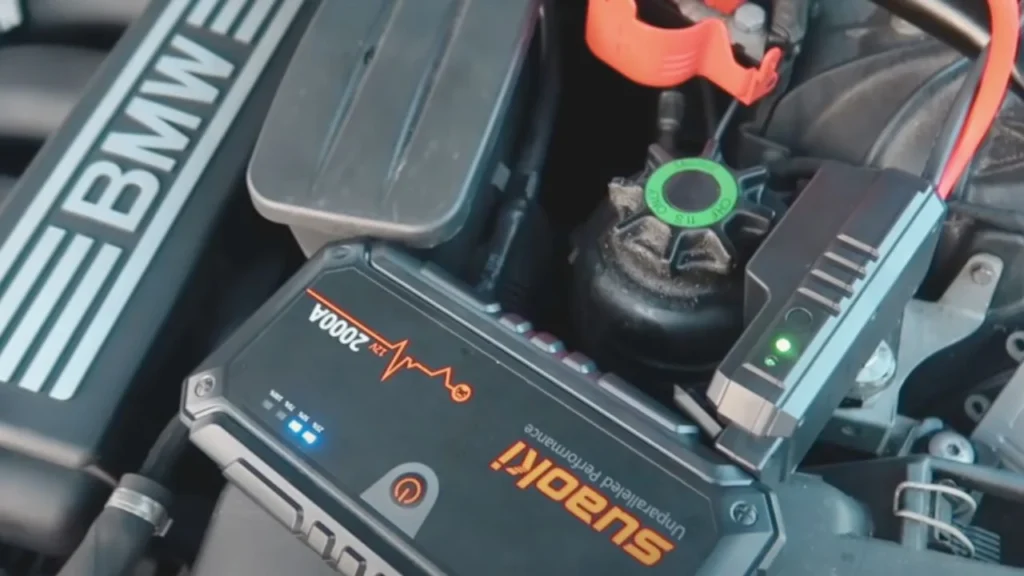
Try starting your car. If it doesn’t respond right away, wait another 3-5 minutes and try again. Keep an eye on the dashboard for any electrical warnings. Persistent failure might indicate battery or electrical issues beyond a jump-start.
Step 5: Disconnect the Cables in Reverse Order
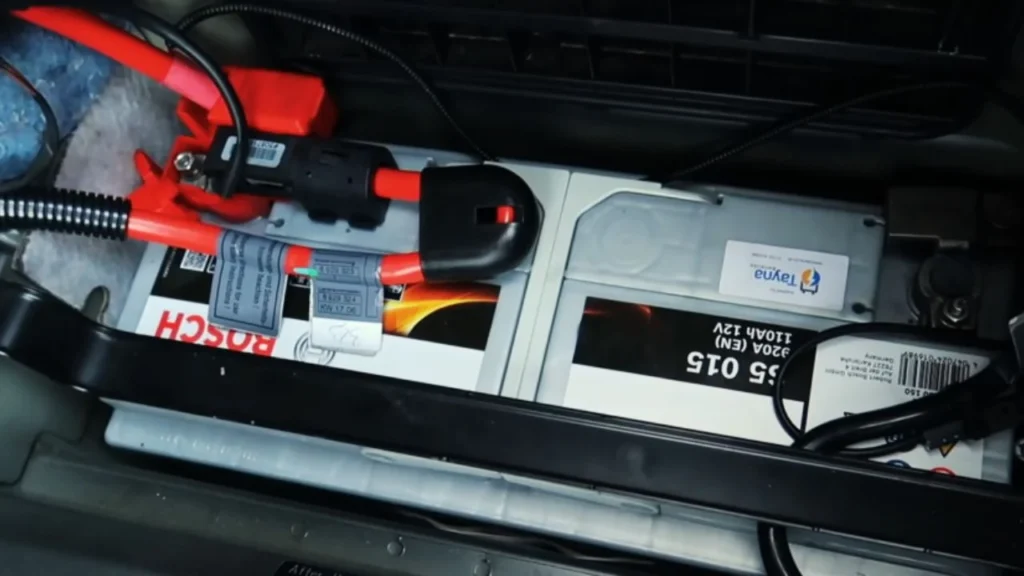
Remove the black clamp from your BMW’s frame first, then the one on the donor’s battery. Next, detach the red clamps in the same order. Handle the cables carefully—keep them from touching each other to avoid sparks. Your BMW is now ready to roll!
Need to jump-start a car by yourself? Follow our complete guide on how to jump-start a car alone to do it safely and efficiently.
Common Issues and Troubleshooting
Even with the right steps, your BMW might still refuse to start. This often happens due to battery or power issues, but don’t worry—here are some quick points to troubleshoot the problem. Understanding these scenarios will help you avoid frustration and get things running smoothly again.
- Old Battery: BMW batteries usually last 4-5 years; if yours is older, it may need replacement.
- Deep Battery Drain: Leaving lights on for over 8-10 hours can cause significant battery drain.
- Insufficient Power from Donor Vehicle: BMWs need 12-14 volts to start effectively.
- Portable Jump Starter: Use one with 800-1000 amps for reliable results.
- Electrical Issues: Problems with the alternator, fuses, or wiring may require professional help.
Precautions for BMW Owners
When it comes to jump-starting a BMW, I can’t stress enough how careful you need to be. A simple mistake can fry your electronics, and that could set you back hundreds of dollars in repairs! On average, BMW electrical diagnostics alone can cost you around $150–200. Not worth the risk, right?
Before you even grab those jumper cables, take two minutes to inspect the battery. If you notice corrosion around the terminals or the cables look damaged, stop right there. It’s better to replace a battery (which runs $150–300) than gamble with your entire electrical system.
Trust me, if you’re not sure about anything, it’s okay to call a pro. Even dealerships now offer mobile assistance for about $100–150. A professional’s help is always cheaper than dealing with blown fuses or melted wires from improper jump-starts. Play it safe—your BMW will thank you!
Safety Guide on How to Jump Start a BMW
Jump-starting a BMW requires careful handling to avoid potential risks, such as electrical damage or injury. Although it’s a straightforward process, the electronics in BMW vehicles are sensitive, and one wrong move can result in costly repairs. Keeping safety at the forefront will ensure that both you and your vehicle stay protected.
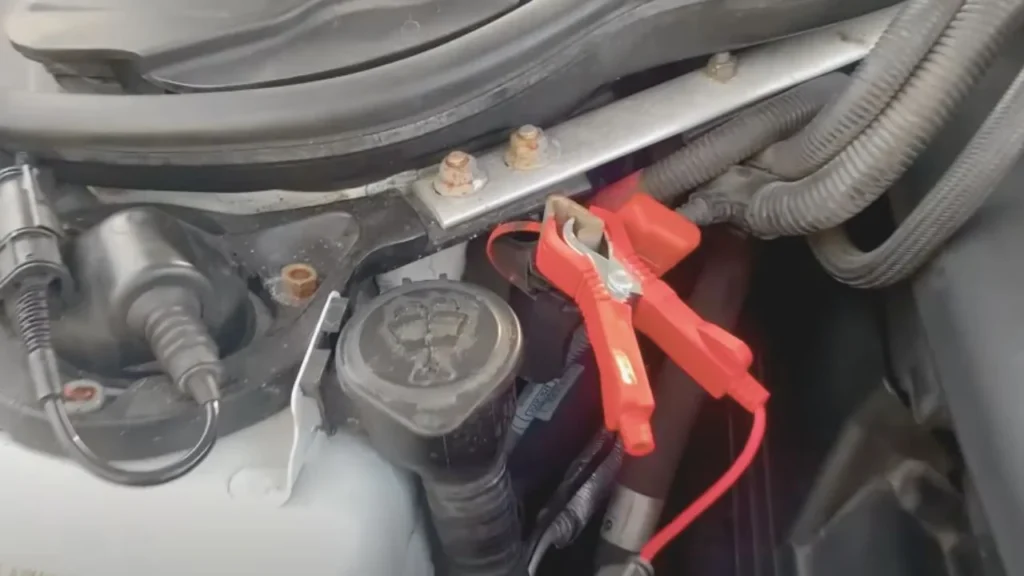
- Inspect Before Starting
Always check the battery and cables for corrosion or damage before proceeding. If you notice any issues, it’s safer to replace the battery or consult a professional to avoid electrical faults. - Handle Cables with Care
When dealing with jumper cables, avoid letting the clamps touch each other, as this could cause sparks or short circuits. Wear gloves and safety glasses to reduce the risk of injury from electrical shocks or flying debris. - Use Grounding to Avoid Sparks
Instead of attaching the negative cable directly to your BMW’s battery, ground it to an unpainted metal surface on the car. This reduces the risk of sparks near the battery, which could ignite gases and cause an explosion. - Protect Both Vehicles
Ensure that the donor vehicle has a healthy battery and alternator to handle the jump-start without damage. Weak batteries or overloaded alternators in either vehicle can lead to system failures. - Monitor for Warning Signs
If the BMW doesn’t start after the first attempt, double-check the connections and wait a few minutes before trying again. Persistent failures may indicate deeper electrical issues, such as a faulty alternator or blown fuses. - Call for Professional Assistance When Needed
If anything seems off or if warning lights appear, it’s best to contact roadside assistance or a certified mechanic. Jump-starting mistakes could damage the electrical system, costing $150–300 for diagnostics and repairs.
Final Words
Knowing how to jump start a BMW is essential to keep you prepared for unexpected battery failures. With careful inspection, proper jumper cable connections, and attention to safety, you can get your car running without damaging its electrical system.
Whether using a donor vehicle or a portable jump starter, following these steps ensures a smooth restart. If issues persist, professional help is the best course of action. Mastering how to jump start a BMW will save you time, money, and prevent unnecessary stress on the road.
Wondering if your hybrid can help others? Find out whether a hybrid can jump-start a normal car and what to consider before trying.
FAQ’s
Is it better to use a battery charger instead of jumper cables?
Using a battery charger is safer for BMWs than jumper cables because it minimizes the risk of electrical surges that could harm the vehicle’s sensitive electronics. BMWs often feature complex systems, including multiple onboard computers and advanced batteries, which can be damaged by sudden voltage spikes during jump-starts.
A charger provides a controlled flow of electricity, reducing potential risks to components like the alternator or fuse box. Additionally, using a charger allows for a gradual recharge, improving the battery’s longevity and performance. If time permits, a battery charger is a more reliable option for restoring battery power safely.
What should I do if my BMW doesn’t start even after a jump?
If your BMW doesn’t start after a jump, first double-check the jumper cable connections to ensure they are secure. Wait an additional 5-10 minutes to allow more time for the battery to charge.
If the engine still doesn’t start, the issue could lie beyond a depleted battery—possibly involving the alternator, starter, or a blown fuse. It’s best to consult a professional mechanic or use BMW’s roadside assistance to avoid further damage to the vehicle’s electrical system.
In some cases, more serious faults with the onboard electronics may require diagnostics and repairs at a service center. Looking for powerful lithium-ion options? Explore our list of the top 6 lithium-ion jump starters to find the best fit for your needs.
